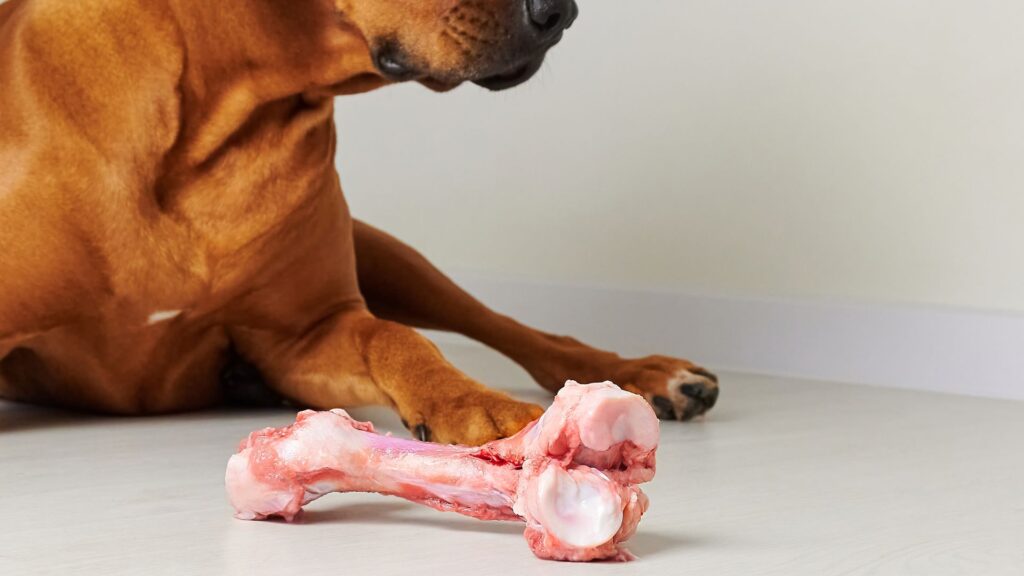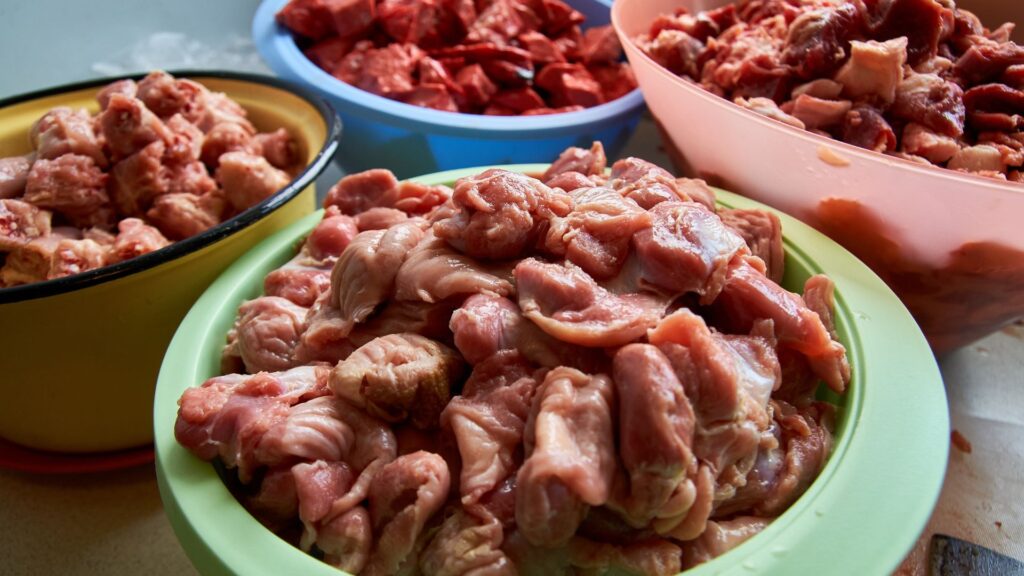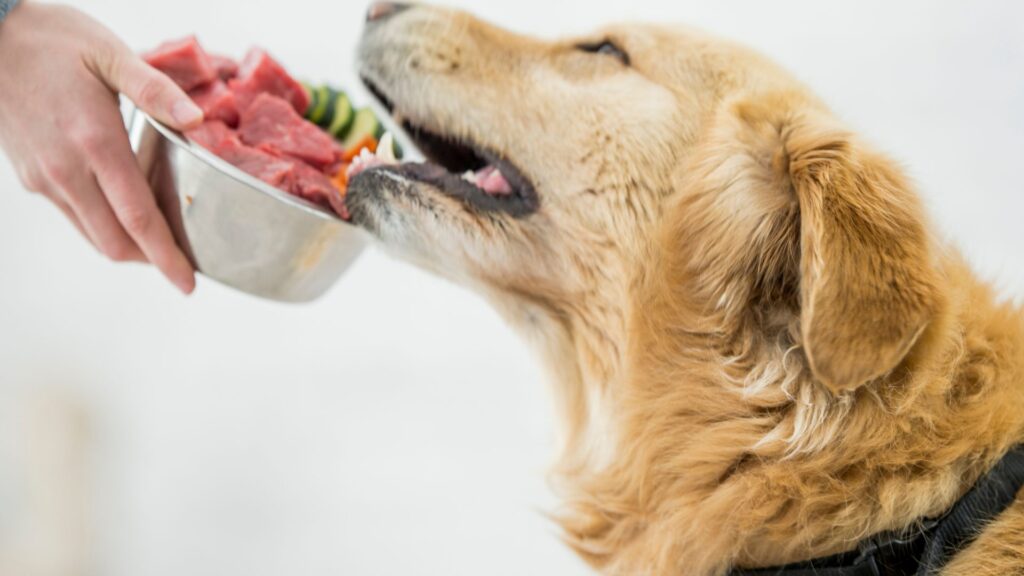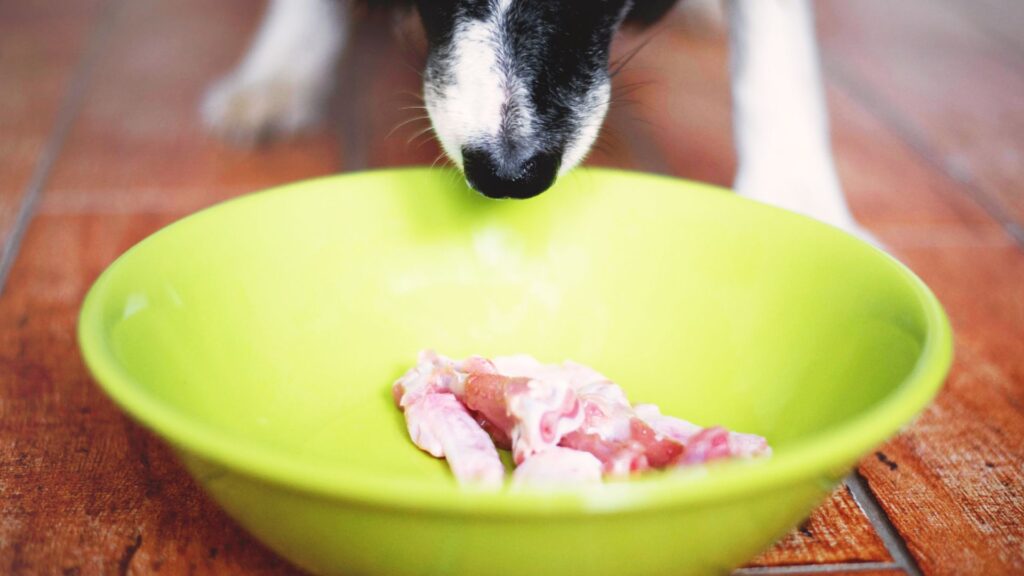Dog lovers are always looking for ways to ensure their furry companions live long, healthy, and happy lives. One topic that has been gaining traction over the years is the benefits of feeding dogs a raw food diet. But what is it about raw food that has so many pet parents raving about it? Let’s dive in.
A Diet Rooted in Evolution
Dogs, while domesticated, still share a lot of their DNA with their wild ancestors. In the wild, canines didn’t have access to processed foods; they ate raw meat, bones, and some plant materials. Feeding your dog raw food tries to mimic their natural and ancestral diet, giving them the nutrients in a form that their bodies are designed to digest.
Natural Nutrients
The process of cooking, while making foods palatable and safe for consumption, often comes with a trade-off: it can lead to the degradation of some crucial nutrients present in the food. The heat applied during cooking can break down and even eliminate several of the vitamins, minerals, and other beneficial compounds inherent in raw ingredients.

By opting to feed your dog a raw diet, you are taking a proactive step to provide them with nutrition in its purest form. This ensures that they are receiving the full spectrum of vitamins and minerals that might otherwise be compromised through cooking. Moreover, raw foods are typically rich in essential fatty acids, which play a significant role in maintaining skin health, brain function, and overall well-being.
They also contain amino acids, the building blocks of proteins, crucial for muscle development and repair. Additionally, raw diets are a source of natural enzymes, which are vital for enhancing digestion and nutrient absorption.
Improved Skin and Coat
A growing number of dog owners who have transitioned their pets to raw diets have enthusiastically shared observations of noticeable improvements in their dogs’ overall appearance and well-being. One of the most commonly cited benefits is the enhanced luster and health of their pets’ coats.
These coats not only appear shinier but also feel softer and healthier to the touch. In addition to this, many of these owners also notice a significant reduction in various skin issues, such as dryness, itchiness, or inflammations that their pets may have previously experienced.

One primary reason behind these positive changes is the abundant presence of omega-3 and omega-6 fatty acids in raw foods. These essential fatty acids play a pivotal role in maintaining skin health and promoting a glossy coat. Furthermore, they offer anti-inflammatory benefits, which can help alleviate certain skin conditions. In essence, the rich nutritional profile of raw diets, especially the presence of these fatty acids, has a direct and beneficial impact on a dog’s skin and coat health.
Enhanced Digestion
A raw diet, comprised primarily of unprocessed ingredients, aligns more closely with the natural dietary habits and evolutionary history of dogs. Their digestive systems have been crafted by evolution to efficiently process raw foods, and this inherent design can be observed in several ways. One of the most noticeable outcomes of a raw food diet is the difference in fecal matter.
Dogs on a raw diet tend to produce stools that are smaller in volume and more firm in consistency. Additionally, some pet owners have reported a significant decrease in gastrointestinal problems, such as diarrhea or constipation, when they switched their dogs to a raw food regimen. This suggests that a diet closer to their natural one might be more agreeable for their digestive tract.
Stronger Immunity
A well-formulated and balanced raw diet can significantly benefit a dog’s overall health, particularly in terms of bolstering their immune system. Given that the raw diet is predominantly unprocessed, it retains a plethora of vital nutrients that often get diminished or lost during cooking or processing.

This means that dogs fed with a raw diet are often consuming a richer array of antioxidants, essential fatty acids, vitamins, and minerals – all of which play a crucial role in strengthening and maintaining a robust immune response. Furthermore, the inherent enzymes and probiotics found in raw food can promote gut health, which is a cornerstone of a strong immune system. Thus, by choosing a raw diet, dog owners are essentially providing their pets with a fortified shield against various illnesses and infections.
Better Dental Health
Providing dogs with raw bones to chew on serves as more than just an engaging activity; it has tangible health benefits, particularly for their oral hygiene. When dogs chew on these raw bones, the natural abrasive action helps to effectively scrape away stubborn tartar and plaque that can accumulate on their teeth over time.
This not only aids in maintaining the cleanliness of their teeth but also ensures healthier gums. The consistent removal of these build-ups is vital as they can lead to bacterial infections if left unchecked. By reducing plaque and tartar, you significantly decrease the chances of your dog developing dental diseases, bad breath, and other related oral health issues.
Additionally, the act of chewing can also stimulate saliva production, which contains enzymes that further aid in keeping the mouth clean. In essence, raw bones serve a dual purpose: offering a natural toothbrush and promoting overall dental well-being.
More Energy and Leaner Body Mass
Raw foods, especially those rich in high-quality proteins, are beneficial for dogs in several ways. Firstly, these proteins enhance a dog’s energy levels, making them more active and lively. Secondly, the consistent intake of such nutrients supports muscle growth and repair. As a result, with time and a consistent raw diet, dogs often exhibit improved muscle definition and strength.

Additionally, this diet can aid in helping dogs achieve a balanced weight, ensuring they remain within a healthy range and reducing potential health risks related to being overweight or underweight. In summary, a raw diet not only provides immediate energy boosts but also long-term physical benefits for dogs.
Conclusion
Feeding your dog raw food comes with numerous benefits, but it’s also essential to ensure that the diet is balanced and safe. Always consult with a veterinarian or a pet nutritionist before making significant changes to your dog’s diet. Each dog is unique, so what works for one might not work for another. But, if done right, a raw diet could be the key to unlocking a happier and healthier life for your four-legged friend. Get updated knowledge on how to feed raw, discounts, coupons, and holistic rearing at www.RawOrigins.pet.

